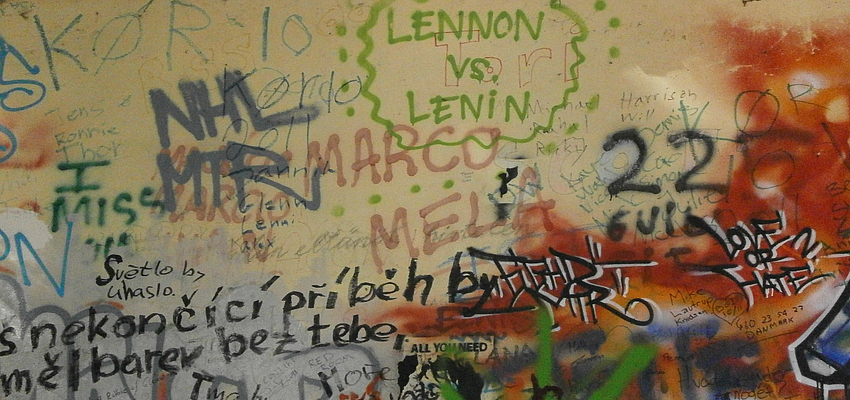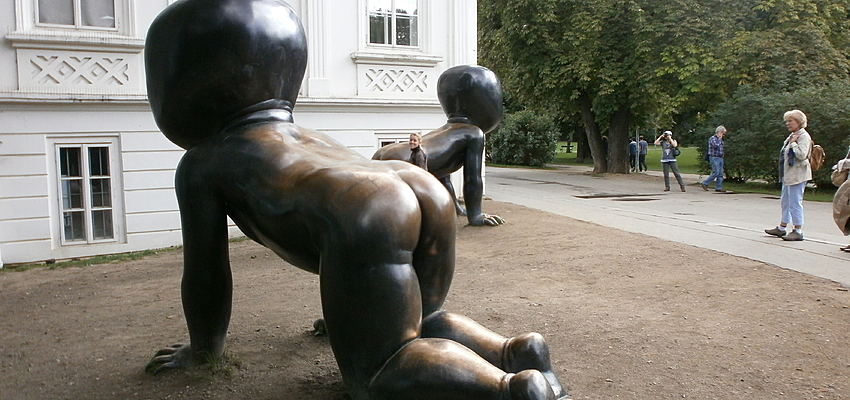


Without wanting to limit the Czech identity to a few general and stationary ideas, we can start to understand this complex and passionate country through its cultural, political and particularly artistic, movements, omnipresent and often avant-garde in the neighbourhoods of Prague and the whole country.
What hits tourists when they arrive in Prague, as well as the exuberant architectural beauty and Europe's "doll's house", it's the unique area reserved for art, far from being restricted to museums. Throughout the town you'll discover posters, galleries, graffiti tags, and, particularly on the John Lennon wall which completely legally welcomes representatives of the area's culture, very open to the creativity of its artists.
Despite the omnipresence of the past in the architecture of the city and the influence on Czech culture, Prague gives free time to young people, even the really young, if you go by the invasion of babies which has affected the capital since 2000. I of course want to talk about David Černý's sculptures which, after having climbed the television tower in the Žižkov district, have now invaded the gardens of the Kampa contemporary art museum, unmissable for art lovers as well as everyone else.

The city is not on the sideline of festivals either, whether it's theatre wit the Prague Fringe Festival in May, or music with the Prague Spring International Music Festival which is celebrating its 70th year this year, or the beer festival for the less music-loving. But it's not only Prague that knows how to celebrate culture. So, the Summer Shakespeare festival takes place in the country's historic castles from Brno to Moravia.
Since the breakdown of the USSR, the Czech Republic has disowned communism to be able to finally enter the European Union in 2004. But you would be wrong to think that communism is nothing more than in the museums, like those in Prague. The reason behind the artistic abundance in Prague and the entire country could be found in its recent entry into the western artistic scene, although since the 1960s Czechoslovakia already shone through its cinema and literature.
In this last category, the major and essential author to help understand the Czech culture is Milan Kundera, whose reflections on the notion of "kitsch" showcase the Czech originality in a political vision which can have art, democratic but also sentimentalist and conservative in the case of kitsch. The works of Kundera in general, and the Unbearable Lightness of Being in particular, are a good introduction to understand the Czech cultural tension, searching for its place between the communist and capitalist worlds.
The Czech Republic is after all a country where traditions and folklore are hugely celebrated, as a response to centuries of foreign domination and the division from Slovakia, emphasising its cultural uniqueness. Many towns welcome folklore festivals, like Prague and Strážnice which can pride itself on the largest in the country, as well as a "skansen, a kind of village museum in the open air. The Moravské Slovácko region Moravia, scattered with skansen, is a gold mine for folklore lovers and for all those who wish to discover Czech traditions away from the big cities and a bit closer to nature and local people who, contrary to those in Prague, never get tired of tourists.